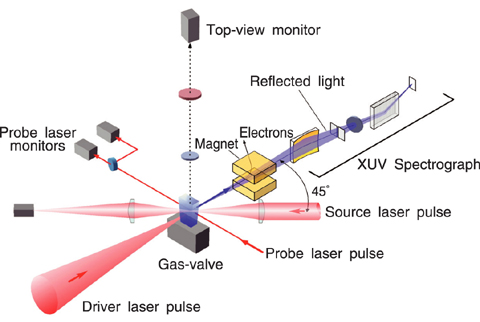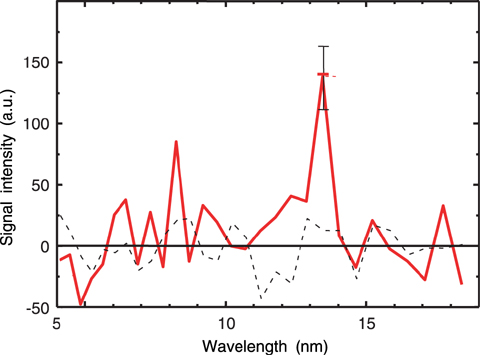
Fig.4-2 A schematic of the proof-of-principle experiment of the flying mirror

Fig.4-3 The spectrum of the light (X-ray) reflected by flying mirrors generated in the plasma
Recently, focused laser intensity has been increasing dramatically, and such intense lasers enable us to explore various fields of science such as nonlinear optics, quantum beam generation, and so on. However, conventional high power lasers must be made very large to attain intensity higher than 1022 W/cm2. Addressing this issue, a revolutionary idea was proposed at JAEA in 2003 making large-scale lasers unnecessary. In the proposed method, a moderate intensity laser is focused onto a plasma, then some of the plasma electrons start to group together. This agglomeration of electrons acts as a mirror (relativistic-speed flying mirror) which reflects and focuses incoming light partially. The characteristics of this flying mirror are summarized as follows: (1) the mirror is stable against intense lasers because it consists of electrons instead of common optical components such as metals; (2) high focused intensity is possible because the reflected light can be focused to a smaller spot due to the wavelength reduction, or frequency upshifting, caused by the Doppler effect; (3) the pulse duration of the reflected light also is compressed by frequency upshifting, which increases the intensity.
Up to now, a proof of this principle has not been made because of the experimental difficulty of colliding two laser pulses with micrometer accuracy. We succeeded in demonstrating this concept by careful design of the experiment and the fine tuning of the colliding of two laser pulses using crossing Ti:Sapphire lasers. As shown in Fig. 4-2, Ti:Sa laser pulses with a peak power of 2 TW and a pulse duration of 80fs were focused onto helium gas. In order to conduct the experiment, we accomplished the following: (i) we improved the pointing stability of lasers by eliminating vibration sources; (ii) we invented a new method to align two laser pulses to collide in a small designated region. A small portion of the laser energy split from the main laser was used as a exposure light and the colliding region in the plasma was thereby monitored with a device similar to a microscope. In addition, viewing the scattered light from the region through a top-view monitor was also implemented to achieve colliding.
When two laser pulses collided properly, we observed extreme ultraviolet frequency photons as seen in Fig.4-3. The incident source laser whose wavelength (frequency) was 780 nm (380 THz) was successfully compressed (upshifted) to 13.4 nm(22,300 THz). The number of the reflected photons per unit solid angle is estimated to be 3 × 107/sr, which is 100 times higher than that expected from incoherent Thomson scattering of plasma electrons. In addition to this, we carefully analyzed experimental data, and we conclude that these photons were obtained by reflection from the electron agglomerate formed in the plasma.
This is the first demonstration of the flying mirror concept, confirmed by observing the frequency upshift of the reflected photons. This method will lead to an ultra-high intensity of 1029 W/cm2, where electron-positron pairs would be produced from vacuum. Moreover, because this method also compresses pulse duration, it may help us achieve attosecond X-rays, a field which is just now opening up.